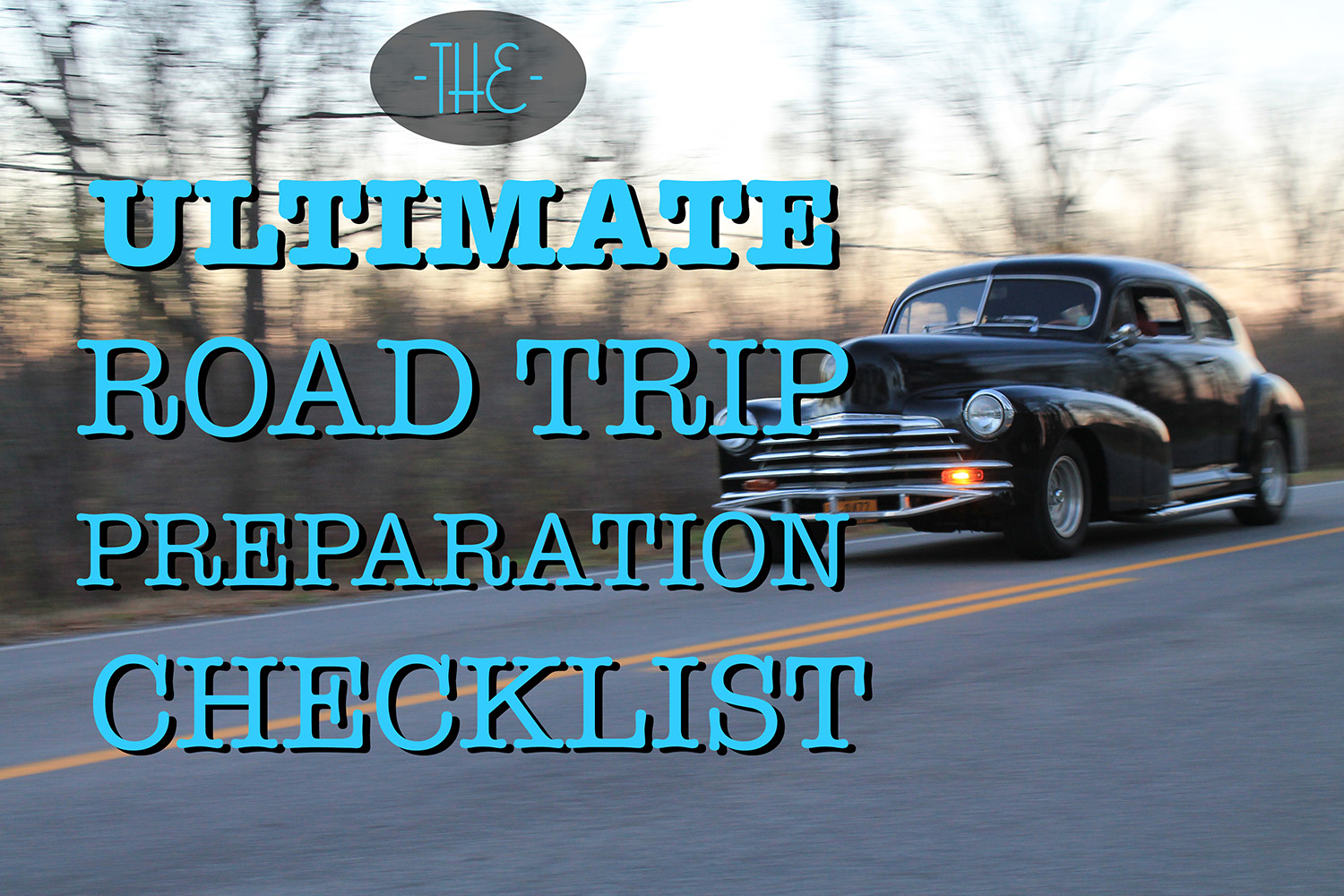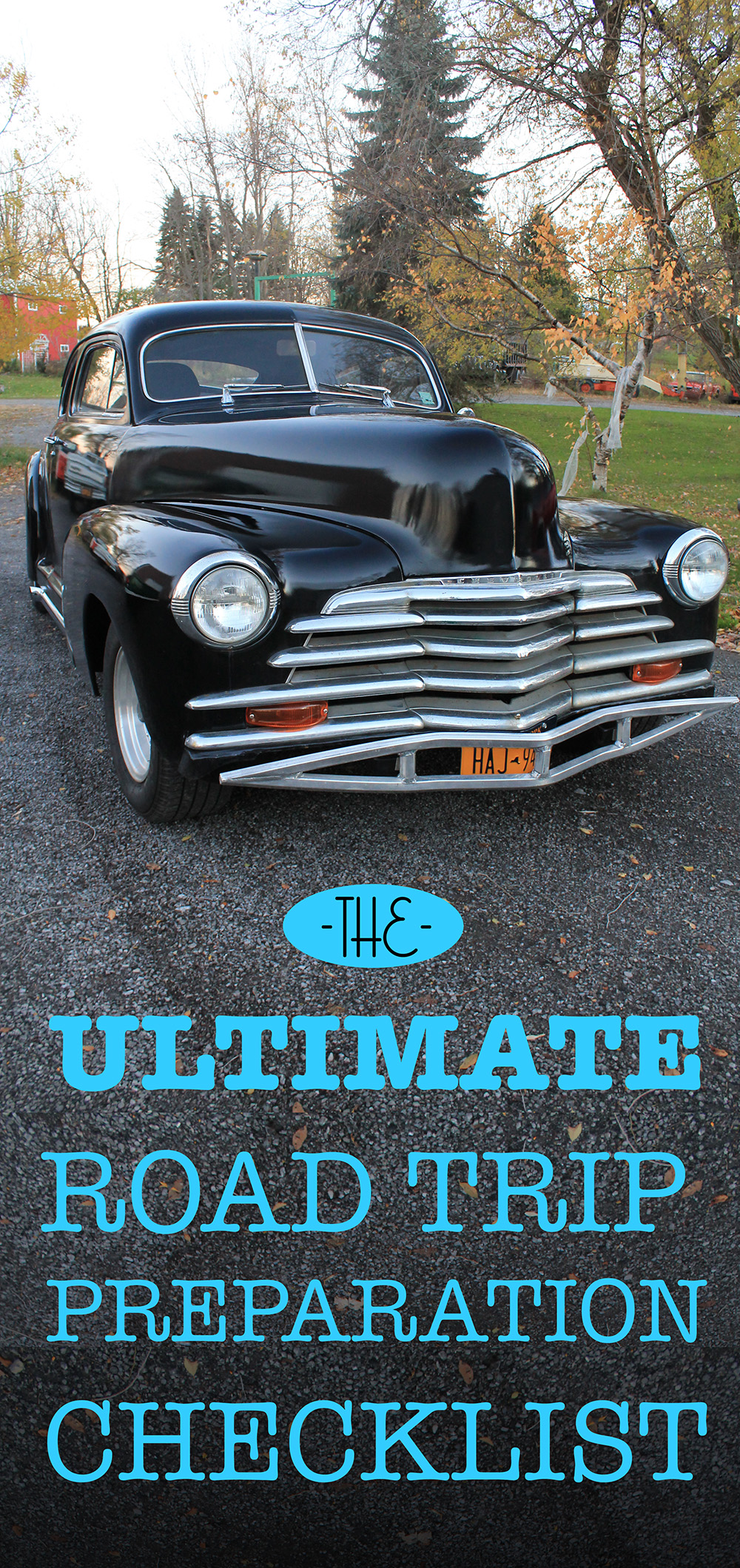
Some of my friends and family know that I’m preparing for an exciting road trip. This won’t be my first long haul I put my vehicle through, but I know the preparation for a road trip is always stressful when you’re taking an older vehicle.
Obviously having a newer vehicle decreases the chances that you’ll experience vehicle problems while traveling, but I’m a bit sentimental about my vehicle and just can’t let it go. This means I ‘ve got to plan carefully to avoid a disaster while making long drives. This is my personal checklist of supplies and precautions to ensure I have a smooth trip.
What to Pack and Learn
Heaven forbid you have to use any of these tools or knowledge, but you’ll save yourself a whole heap of trouble if you can take care of a few problems on your own.
Spare Tire & Jack: Not only should you have a spare tire and jack in your vehicle you should practice lifting your vehicle up and taking the tire off. It’s much easier to familiarize yourself with this process on a sunny day in your driveway than in the rain on the side of the road.
Extra Clothing: This is especially important if you’re planning to drive during the winter in a cold climate. You don’t want to break down and realize you’re going to have to sit in the cold for an hour before help arrives.
Road Flares or Cones: There are a bunch of signals you can choose from these days. From old school road flares that you need to light, to cones, to LEDs, there are unlimited options to signal to other vehicles that you’ve pulled over. You don’t want to rely on just your four-way flashers if you’re pulled over on a highway. The results will be brutal and tragic if someone doesn’t see you and hits you when you’re pulled over. It’s just not worth the risk.
A Quart of Oil: Pick up a quart of oil that matches the oil you have in your vehicle and keep it on hand. You don’t want to end up miles away from a gas station when your oil light comes on.
Jumper Cables: I’ve used my jumper cables to jump about 6 different vehicles and my own. This is one of those handy to have items that most people don’t carry. You can come off as a hero or just save yourself by keeping a pair on hand, but be sure you learn how to use them! You don’t just connect the batteries together (a common mistake.)
Push Start a Standard: Not many people drive standard vehicles anymore, but if you’re one of us you should learn how to push start your vehicle. It’s a handy trick that can save your butt if your starter goes and it’s simple enough that you should even be able to do it on your own.
A Flashlight: You have no idea how many times I’ve needed a flashlight while in my truck. It’s not usually for car repairs, they are just super handy to have.
Tire Pressure Gauge: I got one for free at a job fair years ago and it’s been super handy to have. Newer vehicles sometimes have sensors to tell you what the pressure in your tires is, but when you’re pumping air into them it’s helpful to have the gauge in hand.
Water & a Snack: It’s always good to have some water and a snack in your vehicle in the event you break down. If you’re planning to travel with a number of people, pack enough for everyone. The last thing you need is everyone to be hangry when you’ve just broken down.
Cash: You might pay for everything with a credit card, but I’m positive you’ll run into at least one situation where you’ll need cash on hand. Yes, you can typically get cash from an ATM, but there can be limits on how much you can withdraw from an ATM so it’s best to know you have something on hand.
Get an Offline Map App: Even in the United States, you won’t always have the cell coverage you need to navigate you were you want to go and getting lost can screw up your trip timeline. There are numerous offline map apps for both iOS and Android phones. I’ve always been able to find them for free. I suggest downloading a few and testing them out before your big trip to see how you like them.
Towels, Bags, and Tinted Windows: It doesn’t matter how you hide your belongings, you’ll just want something that can keep your stuff out of sight from any would-be thieves. If you have a GPS, get it out of your window. Anything from cameras to computers should be tucked under a seat or covered up.
Insurance and More Insurance
Nobody likes to buy insurance because everyone wants to believe nothing bad will go wrong on their trip. That’s a foolish bet to make, especially on a long trip away from your support network of friends and family. In most cases, good insurance choices can save you a lot of headaches.
Get AAA: It’s simple. If you have a vehicle that might break down, you should have AAA. Did you know it’s good in Canada as well as America? So it’s great to have even if you’re visiting our neighbors to the north. AAA will give you piece of mind and can help with anything from locking yourself in your car to needing a 100 mile tow back to civilization. It’s worth every penny!
Upgrade Your Car Insurance Package: You might be excited thinking that you only pay a small amount of money every month or year for your car insurance, but do you know what you’re really buying? In most cases, the lowest cost insurance package won’t cover the damage to your car in the event of an accident. Low cost plans generally only cover damage to the other person’s property. Getting cheap car insurance before going on a long road trip is penny wise and pound foolish! Read through your insurance documentation to make sure you’ll be covered in the places you’ll be driving and for enough to protect yourself in the event of an accident. You can always reduce your coverage when you get back from your trip if you want.
Travel Insurance: It’s something that I didn’t consider important until chatting with other professional travelers. Similar to car insurance that doesn’t provide adequate coverage, your health insurance may not provide enough coverage should something go wrong while you’re away from home. You may want to look at a few plans so that your dream road trip doesn’t turn into a nightmare.
Preemptive Car Repairs
You might know to check one or two things before you set out on your grand adventure, but it’s always a good idea to have your mechanic check everything over as well just to be sure.
Change Your Fluids: Change your oil and oil filter, flush your cooling system, and make sure you have plenty of wiper fluid. While you shouldn’t need to fill up the other fluids, like power steering fluid, it’s a good idea to check and make sure they’re full up to the designated fill lines.
Check Your Belts: You or your mechanic should go over your belts to make sure they aren’t cracking or worn. Having a belt break can be devastating to your trip and costly to repair on the road.
Brakes: These are arguably one of the most important parts of your vehicle. Make sure they work. Replace lines, shoes, or whatever else shows too much wear. It’s better to be safe then sorry when it comes to brakes.
Tires: Second only to brakes are your tires. Make sure you have a good amount of tread left on your tires, especially if you’re traveling somewhere where you might encounter ice and snow.
Spark plugs: These tend to wear out over time and replacing them should increase the fuel efficiency of your vehicle. They are inexpensive and easy to replace so do yourself the favor and replace them.
Air filter: I’ve been told that dirty air filters can create more wear and tear on your engine than a dirty oil filter so make sure to change this especially if you’re traveling somewhere dry and dusty.
Battery: This is good to check, but easy to replace should you need to do it on the road. Most automotive stores will even install a new battery for you when you purchase one. So while it’s important to check, it’s less important than some of the other things on this list.
After all of that, you should be ready to hit the road with confidence. And of course, packing a few days before you leave is always advisable!

Leave a Reply